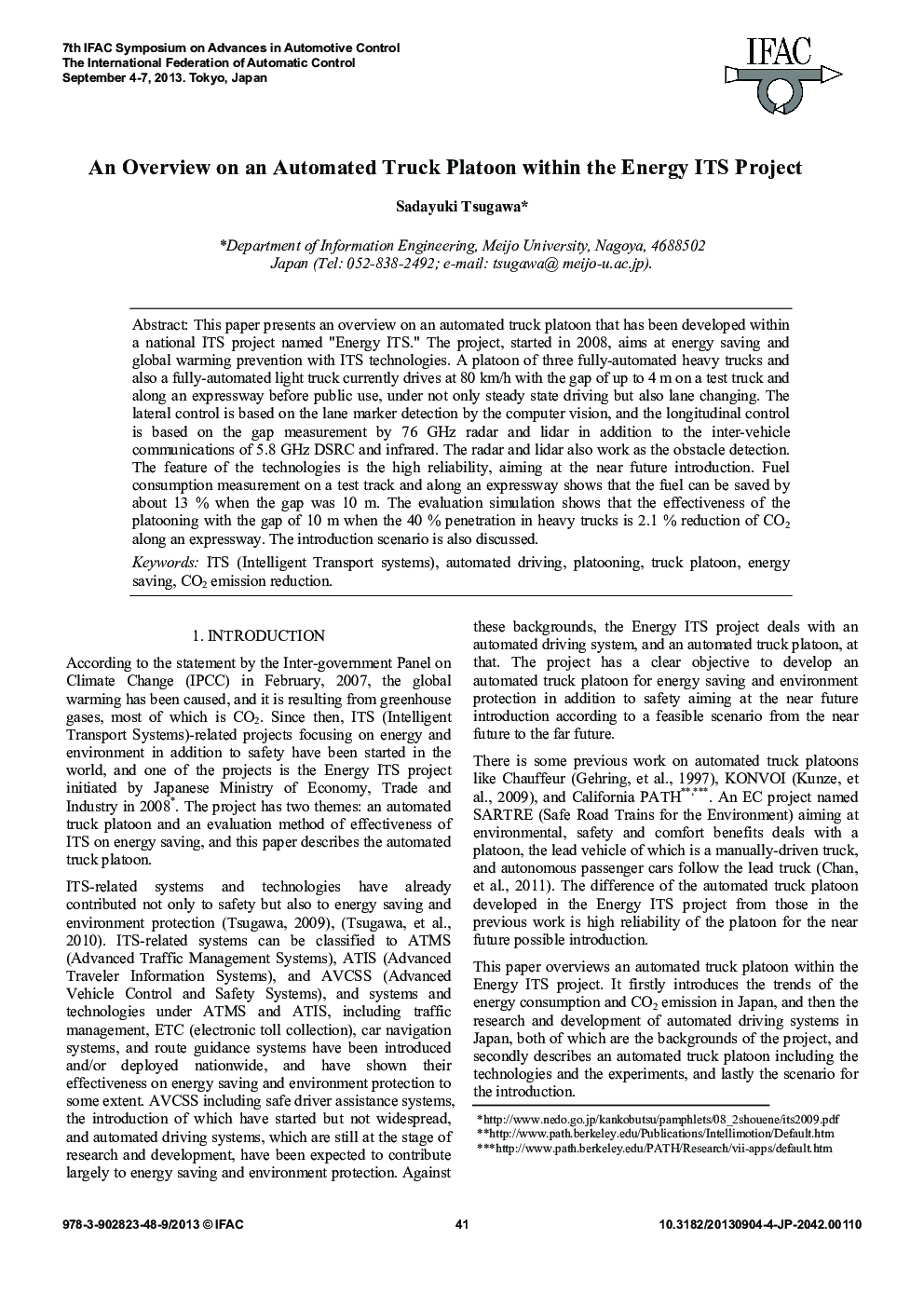| کد مقاله | کد نشریه | سال انتشار | مقاله انگلیسی | نسخه تمام متن |
|---|---|---|---|---|
| 715547 | 892205 | 2013 | 6 صفحه PDF | دانلود رایگان |

This paper presents an overview on an automated truck platoon that has been developed within a national ITS project named “Energy ITS.” The project, started in 2008, aims at energy saving and global warming prevention with ITS technologies. A platoon of three fully-automated heavy trucks and also a fully-automated light truck currently drives at 80 km/h with the gap of up to 4 m on a test truck and along an expressway before public use, under not only steady state driving but also lane changing. The lateral control is based on the lane marker detection by the computer vision, and the longitudinal control is based on the gap measurement by 76 GHz radar and lidar in addition to the inter-vehicle communications of 5.8 GHz DSRC and infrared. The radar and lidar also work as the obstacle detection. The feature of the technologies is the high reliability, aiming at the near future introduction. Fuel consumption measurement on a test track and along an expressway shows that the fuel can be saved by about 13 % when the gap was 10 m. The evaluation simulation shows that the effectiveness of the platooning with the gap of 10 m when the 40 % penetration in heavy trucks is 2.1 % reduction of CO2 along an expressway. The introduction scenario is also discussed.
Journal: IFAC Proceedings Volumes - Volume 46, Issue 21, 2013, Pages 41-46